Last Monday night, I had the experience of a lifetime–seeing my favorite living artist, the three-decade strong, genre-transcending, brilliant singer-songwriter Nick Cave perform live with The Bad Seeds at the Chicago Theatre.
Exceeding my hopes and fears, the experience left me buzzing, reinvigorated and deeply encouraged. It was also apparently exactly what I needed to get me blogging again.
This encounter, and this blog, have also led me deep into a subject I’ve grappled with for a long time, but never tried to put clearly into words in a public way: darkness. In art, music or daily life, how can it be valuable? How do we understand–or misunderstand–darkness, artists who express it, or people who identify with it in our culture?
Try as I might, I couldn’t squeeze this into one blog. So I’ve followed a friend’s advice and chopped it (carefully) into three mini-chapters. First, I’ll introduce Cave and explore this thing about darkness. Second, the concert itself including one big surprise. And third, a second surprise, “big take-away,” and some photos.
As you read through, I invite you to click on the song links and let the music play (each links to the actual song on YouTube).
Sound good? Here goes…
“Nick who?” (An Introduction)
If you haven’t heard of Nick Cave, don’t worry. Most folks haven’t.
Originally from Australia, Cave made the global music scene back in the 80’s with his band The Birthday Party with their striking blend of punk, gritty-wild carnivalesque sounds. He continued to evolve this sound with his next band, The Bad Seeds,’ with whom he went on to produced 15 albums–the last released in 2012. He’s also lead singer and songwriter in Grinderman, not to mention a published author, screenwriter, composer, and occasional actor.
Nick crept into my life four years ago when, on a whim, I revisited an old college crush’s recommendation. Back in college, it did nothing for me, but for some reason we clicked the second time around. The first song to hook me: “Where the Wild Roses Grow,” a dreamy duet with Kylie Minogue–one of a series of songs on the “Murder Ballads” album which tell a different story about–you guessed it–murder. For days, I played and sang it nonstop–at home, in the car, walking around the nonprofit office where I worked.
From there, I meandered through the Bad Seeds discography, increasingly impressed with the breadth of styles, imagination, and both lyrical and musical artistry–until, one day, I realized he was my favorite living artist. (Nonliving: Fabrizio DeAndre)
As one reviewer writes, “No one paints a picture quite as vividly with lyrics as does Cave, and part of his appeal is built on pure storytelling.” Take these lines from “Hallelujah”:
On the first day of May I took to the road
I’d been staring out the window most of the morning
I’d watched the rain claw at the glass
And a vicious wind blew hard and fast
I should have taken it as a warning
I’d given my nurse the weekend off
My meals were ill prepared
My typewriter had turned mute as a tomb
And my piano crouched in the corner of my room
With all its teeth bared
[listen]
Perhaps, in part, it’s Cave’s storytelling style that locked me into him. I’ve always loved stories, from when my parents read to me as a kid–mostly mom whose soothing story voice would then travel to my brother’s room and reverberate through the wall once I’d been safely tucked in.
As far as subject matter, Cave describes his focus as the three “biggies”: “Love, God, and Death,” adding, “You just kind of dress them up in different ways.”
Different ways, indeed. The stories and styles range from raucous, wild or shockingly dark tales of murder, revenge and disaster like “Stagger Lee,” “Henry Lee,” and “Tupelo” to the most enchanting love songs I’ve ever heard (“Lime Tree Arbor,” “Sweetheart Come,” “Love Letter”).
Then there are the ones that make you want to weep in a corner for a few good hours like “O’Children,” “Hallelujah,” or “As I Sat Sadly By Her Side”–and, of course “The Weeping Song” which couldn’t be more clear about its purpose: “This is a weeping song; a song in which to weep.”
In “God is in the House” and “The Mercy Seat,” Cave offers up thinly cloaked social commentary on bigotry, parochialism and the justice system. At other times, he bows reverently down to something greater, godlike (“There is a Kingdom.”)
Finally, there’s Cave’s way of bringing seeming opposite themes or feelings into one song as seamless and seductively palatable partners. For instance, love and hate (“Far From Me”), or sacred/religious and personal/profane love
I don’t believe in an interventionist god
but I know, darlin’, that you do
but if I did I would kneel down and ask him
not to intervene when it came to you
(“Into My Arms” < click to listen)
Yet beyond skill and style, there are deeper reasons why Cave has won the title of “my favorite living artist.”
Why Cave?
There is, of course, that inexplicable thing that we each have about something or someone who moves us which words can never capture, that “something” that rocks your soul, like a key sliding into a hole you didn’t know you had. We each have our own, and I don’t expect everyone to feel that–just like I can’t expect anyone to feel the love I do for certain people.
Apart from that “something,” Cave is great in my eyes for several reasons.
First, he has always been one thing: completely and unapologetically himself.
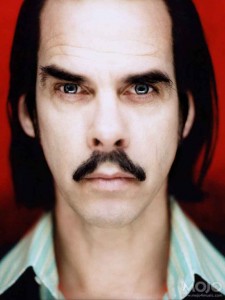 I believe he comes from somewhere real. And, I believe that is why he’s able to move deftly from the brutal and harsh to the subtle, worshipful, or sweet.
I believe he comes from somewhere real. And, I believe that is why he’s able to move deftly from the brutal and harsh to the subtle, worshipful, or sweet.
This “trueness to oneself” as an artist, and in a larger sense as a human being, is something I attempt and often fail to achieve. Too often, I find myself giving in to preoccupation with current trends and fear over how others will receive me or my crafts, be it writing, art, photography, or community-building. Cave reminds me to let that junk go and concentrate on being myself.
Secondly, I admire and strive to equal Cave’s complete dedication to his craft. This video is an excellent example, showing the studio recording of “The Sorrowful Wife.” At the end, he pulls away from the mic and asks the recorder, “How was it?” “98,” the voice replies. Nick responds, “98 out of 100? …Guess we’d better do another one.” Whether you like his style or not, it’s hard not to admire an artist who’s running strong with over 15 albums, two books, and other successful creative projects under his belt, and whose work has encompassed such a broad range of styles and periods without losing steam.
Embracing Darkness
The last thing about Nick Cave that’s won my love is perhaps the most personal: his enthusiastic inclusion of darkness in his work. As I mentioned, he allows plenty of it into his stories, music and voice–be it in the form of violence, madness, bitterness or sorrow. In some of the more violent songs like Stagger Lee, Curse of Millhaven, and The Lyre of Orpheus, Cave and the band seem to relish the sinister brutality as they bring it to life in word and sound.
I must confess, I relish these songs too–as well as the sad, solemn, mad, and bitter ones.
In the big picture, I think their “inclusion of darkness” demonstrates a willingness to engage fully in both the creative process and the experience of being human–a quality that’s necessary to create anything of impact or enduring value in the world.
First, I relish them because they make me feel at home. They give a strange kind of permission to be who I’ve always been but often felt I shouldn’t be.
Early memory: standing as a child before my Mother, crestfallen at her reaction to a drawing I just showed her. The drawing was one of those which had departed from my happier artistic themes of cats, mice and pretty ladies, diving into a realm I couldn’t explain, but simply came out of me. “Interesting,” she’d say. Her paused, hanging tone betrayed discomfort and disturbance. I’ve maintained my a penchant for the sinister, from good horror flicks to music like Marilyn Manson or Nine Inch Nails. Many of my drawings still have a darkness to them, and provoke varied reactions from people who see them.
I sometimes attribute this quality in me to repeated exposure at an early age to the 50’s era mathematician-musician Tom Lehrer, a favorite of my (also mathematician-musician) father. Lehrer’s catchier tunes include “Poisoning Pigeons in the Park,” and “Irish Ballad” (about a young girl who murders her family in a variety of creative ways–a song which, incidentally, bears a strong resemblance to the little girl in Cave’s Curse of Millhaven).
While I can joke about that, I suspect it’s not really something external that has made this a part of who I am or what attracts me.
Ironically, the “other side” of me is very “non-dark.” I’m a practising Buddhist. I believe in the innate goodness of all people and the potential for any situation to be turned into something positive. I believe in pointing my life and actions as much as possible in a direction that brings good, growth, thriving and healthy relationships into the world. I love people, dislike conflict in daily life, and most of all, hate hurting other people or feeling responsible for their pain.
So, this part of me that resonates with and sometimes creates things that are brutal, harsh, sharp or sinister has always been a source of confusion for me and others. How can I be two such opposite things at the same time? Should I submerge that dark part, or try to wipe it out?
For this reason, encountering Nick Cave as an artist was like finding a best friend, or a perfect lover–or a safe space in which to sit, dream, create, and not feel alone.
Just like my Mom had trouble embracing or enjoying my weird or dark art, I think our larger culture over-simplifies, misunderstands and under-appreciates this kind of creativity. We also do this to people who love or produce it.
Cave is one who pushed through this barrier and came out on top. Who was he in high  school? That quiet kid always scribbling in his notebook? Or maybe the rough one with too much energy and a taste for the edge.
school? That quiet kid always scribbling in his notebook? Or maybe the rough one with too much energy and a taste for the edge.
Today, how do we view those kids who dress in black, sport piercings, or otherwise show a penchant for the weird and the dark? At best, we react with tolerant discomfort. This discomfort is based on a belief that a taste for or incorporation of darkness signals imbalance, deviation or deficiency.
What if we were to see them differently–as individuals courageous enough to host harshness within them, or to even feel it in the first place?
Freedom
Nick Cave’s successful, undaunted walk between dark and light, which he twines together in narratives that reach around, under, behind and through our world’s more rigid moralistic beliefs, frees me to be all of who I am and to value it as necessary material for creating my own masterpieces.
He reminds me that, rather than “good” or “bad,” I am a force… a force which, when focused like a laser on my goals and and when freed from worries about others’ judgement, can encompass, embrace, and celebrate with grace and impact the entire gamut of human experience with all its pocks and gashes as well as its most sublime states of bliss and beauty. And, like him, I can do this, consistently, over a lifetime, in a way that will resonate with others and bring something of value to the world.
By not averting myself from what’s dark in and around me but, rather, going where it pulls me–while rooted in a solid sense of self-worth and relation to the world–I can give voice to that in a way that is important, needed, and good. I can open to and allow something to flow through me that is not picture perfect and will probably be misunderstood by tons of people. I’ll be saying “yes” in the presence of pain, sorrow, harshness or mystery.
If that’s not what art is for, I don’t know what it is.
So–in summary, here’s what I get from Cave: Honor that which is within you, however weird and without welcome it might seem out in the world. Give it life–a story, a sound, a color or a movement. It has a reason for being there.
When you give it life, you are affirming the vastness of your own life and creative capacity. Furthermore, by acknowledging and giving expression to this strange, hard thing, you and your creation might end up being the key to that unlocks someone else’s frozen, isolated realness… just as Nick Cave and his bold, sometimes brutal repertoire have for me.
~ O ~
If you haven’t yet, I invite you, to check out some of the songs linked above and hear the music for yourself. Then, please share your thoughts. I especially want to know…
What do you think of Nick Cave?
What’s your relationship to darkness or “dark” artists?
Does this “inclusion of darkness” make any sense to you? Can it create anything of positive value in the world–or is this just some bunk I’m cooking up to justify a bad addiction to the dark side?


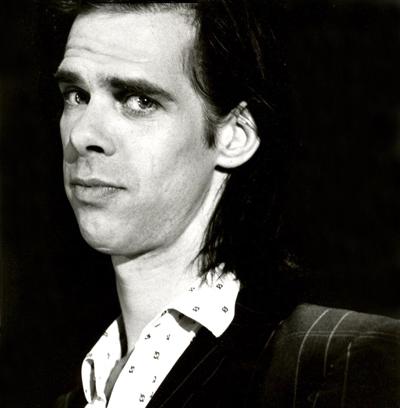
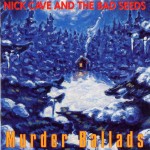
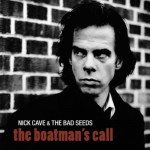
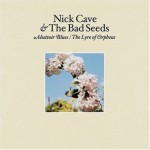
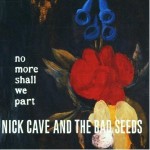
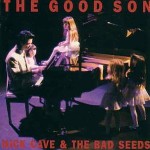

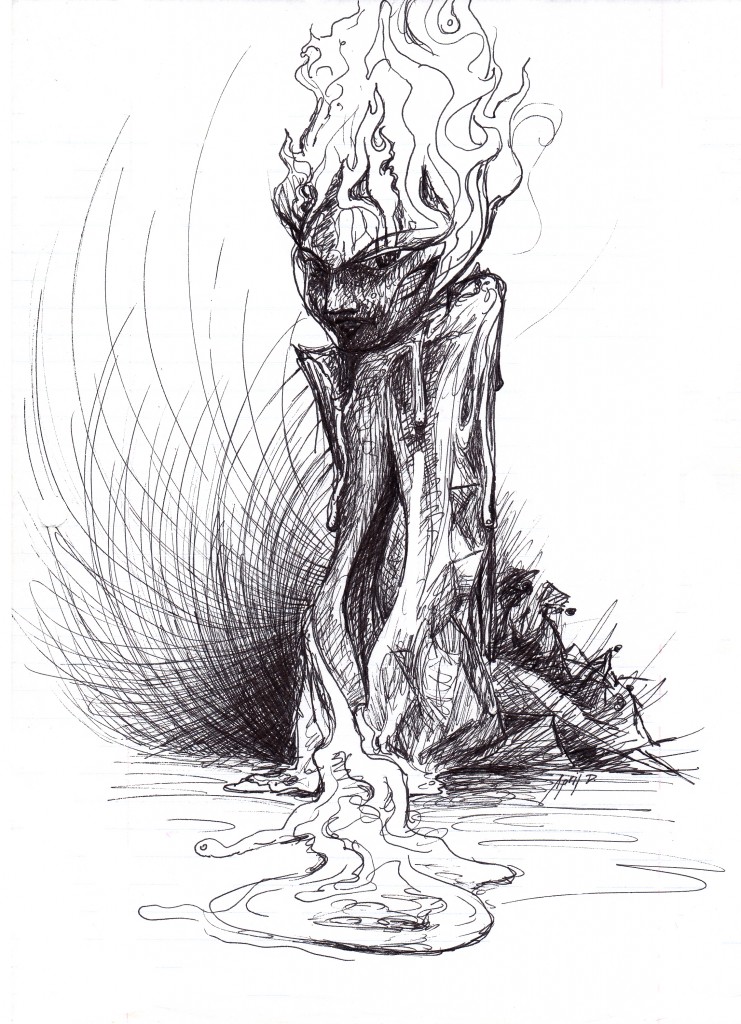
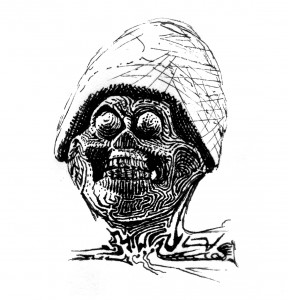
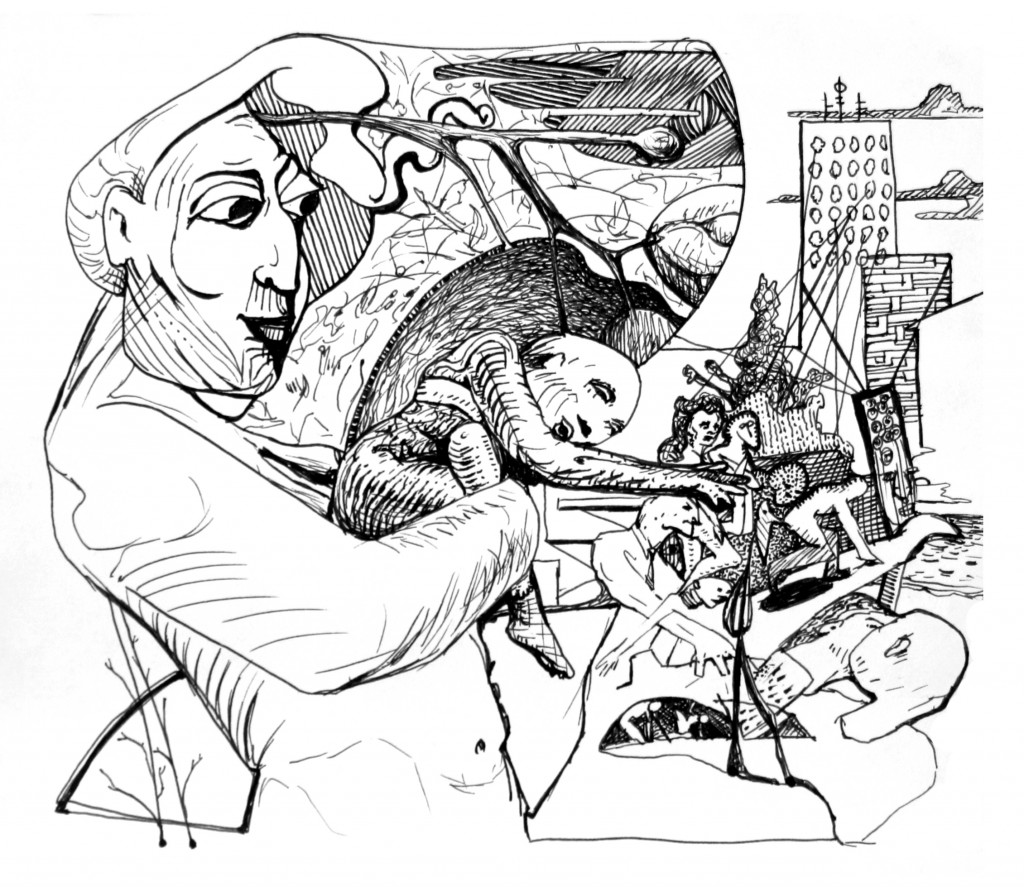
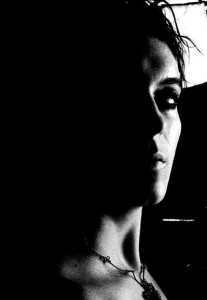
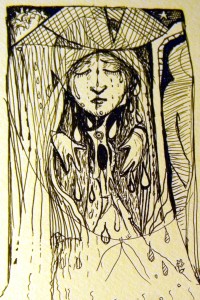
I’ve always seen your amazing “buddhist” side and knew there was a “yin” side in you as well, the one that we usually call the “dark side within” but I found it rather colorful and enticing. Nothing to be afraid of really, specially if you are able to give it voice and space. That is what a good balance is consistent of (IMO)
Looking forward to your second part…
Love,
“Nelita”…
Nel[it]a,
Thank you for your lovely encouraging words and insight. I love what you say here: “Nothing to be afraid of really, specially if you are able to give it voice and space. That is what a good balance is consistent of (IMO).”
And this makes me think that I should have brought my one story full circle, of my Mom’s confusion and disturbance at the dark stuff I’d make from early on… despite that, she and my Dad NEVER sought to DIScourage me from fully expressing myself, and were and still are the greatest supports for me as an artist and person who does work it’s very hard to describe…
Thank you for being such a great friend and for taking the time to read and share your thoughts.
Love you,
“Aprilita” 🙂
Great post April!
What do I think of Nick Cave? I feel that haven’t really explored his material long enough to form an opinion other than I like his aesthetics, use of light, color and editing in his videos, (aside from his lyrics) they really get his point across; So, in that sense his talent is indisputable. Not to mention the intensity his voice and music add to the stories. Reminds me of David Lynch, a trascendental meditator who, like Cave, is not afraid of the dark. That intensity is something I can relate to.
As far as my relationship to darkness, it’s something I’ve always sort of been afraid to embrace personally for fear of scarring people, but, have always been drawn to, not afraid to look at, and sometimes overindulge in emotionally speaking.
I can relate to these lines: “First, I relish them because they make me feel at home. They give a strange kind of permission to be who I’ve always been but often felt I shouldn’t be.”
And this song: http://www.youtube.com/watch?v=Ahr4KFl79WI&feature=share&list=PLB8CB397EC03F2A0F.
April, this is one of my favorite passages by David Whyte that so affirms your statement “I’ll be saying “yes” in the presence of pain, sorrow, harshness or mystery.” Thanks so very much for sharing these reflections with us all!
It doesn’t interest me if there is one God
or many gods.
I want to know if you belong or feel
abandoned.
If you know despair or can see it in others.
I want to know
if you are prepared to live in the world
with its harsh need
to change you. If you can look back
with firm eyes
saying this is where I stand. I want to know
if you know
how to melt into that fierce heat of living
falling toward
the center of your longing. I want to know
if you are willing
to live, day by day, with the consequence of love
and the bitter
unwanted passion of your sure defeat.
I have been told, in that fierce embrace, even
the gods speak of God.
David Whyte, from Fire In the Earth
Beth,
I so appreciate your comment…. this poem is truly powerful. I need to read it a few more times. It’s that tension, right? Not good or bad but the full act of living, with all that life brings, that is of real value. Man, thank you so much! I’m looking very much forward to meeting you in Toronto, Anne says wonderful things about you and your TEDx Talk moved me multiple times in one viewing. And, I’m super interested in how you’ve found ways to bring art into powering social change. Thank you again!!!
April,
Words cannot express how brilliant this piece is, but further, how brilliant you are. But I’ll try and use words, if only half as eloquently, to explain how much I am grateful to know such a beaming light. The fact that you are able to recognize darkness in Cave’s artistry and in your own life, accept it for what it is (a natural part of the human condition), and move forward with your practice in life is incredible. For people who acknowledge darkness, I think it may be difficult to not become obsessed with it, whether in healthy or unhealthy ways. You use it as balance I imagine…something to be understood and appreciated for what it is, but as a ‘yin’ to your ever-so-bright ‘yang’.
Thank you for FINALLY writing again. You are amazing!! I want more 🙂
Cheers
kirk
Kirk — man, words cannot express how grateful and blown away I am by your positive feedback (as a writer whose work I so enjoy and love to share). I think you’re right that not becoming obsessed with darkness can be difficult. Makes me think of how we can best give space to people–or ourselves–to explore it and keep from tipping off an edge. In my own experience, it’s when people don’t freak out and back away but have curiosity or, maybe better, join with me in using its pull as an opportunity to create something individually or collectively. Like in all things, I guess, I see isolation as the thing that causes this kinda neutral thing to become destructive, and connection, camaraderie and inclusion as the ingredient which lets it become a useful force.
Thank you for encouraging me to keep writing — with your own, with your friendship, and with this awesome comment…!!!
Hugs,
April
April – a beautiful and eloquent post about a fascinating subject. Much deeper yet very much connected to the discussion we had yesterday about the tension between what IS in this world every day, on a day to day, ordinary level, that oppresses people and what IS in this world every day, on a day to day, extraordinary level, that supports freedom and creates possibility – and some of which we got to see yesterday. Thank you.
And Beth – I love the David Whyte quote, thanks!
Anne,
Yes!!! and Thank you! You’re so right. Maybe I feel the need to ‘balance’ myself with stuff like Cave’s, which talks a lot about people abusing each other, since I’m trying so hard together with folks like you to uncover and help make more stories of the capacity people have to give, overcome, and shine for their greatest “gift DNA” (to hijack Beth’s great term.)
I love Beth’s quote too.
I’m glad you discovered Nick Cave. Truly one of the greats of our time. And I am more than a little jealous that you got to see him live! I also tend towards a lot of darker themes in art. I have a certain fascination with Stack-o-lee or Stagger Lee, which has an extremely interesting history, and Nick Cave’s version is among my favorites. If you have never heard the Louvin Brothers’ “Knoxville Girl,” you should check it out. It is strikingly beautiful and horrific at the same time, and one of my all-time favorite songs.
Too often, we are expected to draw lines between good and evil, even when we are quite aware that the world is not so simple. Good people are capable of evil deeds, and the worst people can perform profound acts of good. And in the end, most everyone has good intentions.
I think darker art is important as an outlet for our own capacity for truly awful behavior. It allows us to contemplate our potential for evil, and when truly great forces us to simultaneously contemplate our potential for good.
Art is a space to explore our behavior as humans, and that includes our darkest behaviors and thoughts.
I personally find the cinema to be the most interesting medium when it comes to exploring the darker side of humanity. Film noir was able to break down the idea of a dualist, good vs. evil mindset, while appearing to exist within the same. Many great recent filims have explored our capacity to be simultaneously cruel and loving, both as individuals and as a species.
I look forward to reading the rest of your writings on Nick Cave and on darkness in art.
Kevin,
this is SO well put. Thanks for this really thoughtful and insightful comment.
You said really well what I think I was trying to get at. One thing I’m really interested in is, what is the tipping point, for each of us personally or collectively as a culture, at which expressing, exploring, and in a way celebrating this darkness stops serving that purpose? It’s kind of a hypothetical question… I think the answer has to do with basing ourselves in solid philosophies and relationships of good in real life, so the rest really is a space of exploration rather than reinforcement or cultivating nastiness… lol.
And while I am sorry to make you jealous and that you didn’t get to come too, I’m glad that I can put the experience into words so hopefully you can feel like you were. 🙂
I will definitely look up your recommendation — you’re top on my list of music-recommenders I trust.
I really like what you wrote and i especially like your investigation into your personal “dark” and “weird” side. I think that for me it is something within myself i have been acutely sensitive to for most of my life. and while it isn’t pretty and it can really hurt at times it is a very important part of our life experience. I think that embracing it as people more commonly embrace light and beauty can make a person more complete and well rounded. we are predators and we are prey…. when we aren’t busy surviving we have the opportunity to really live and enjoy life (if we’re lucky). i think that in our society it is easy to gloss over the survival part because it is masked by the complexity of “civilization”. i think it is very healthy to embrace beauty, but true beauty includes the ugly and dark and weird. “Beauty and the Beast” is a great example of that. the “Princess and the Frog” (one of the sexiest metaphors ever!) and rhymes like “Ring Around the Rosy” (a physical symptom of the plague) pocket full of posies (the flowers that are laid out over the dead bodies) ashes, ashes(the cremation of all the dead bodies) we all fall down (we are all susceptible). it is beautiful and true and it is scary and horrifying. by having a song the fear can be shared. we are not alone. that is community support. it adds security maybe even comfort…
i can see how nick cave’s songs in some ways effect me the way ring around the rosy does. And i can definitely understand your connection to it.
Also btw From a “fun education” point of view I really like all the pics and links to videos etc… it was a good read. thanks!